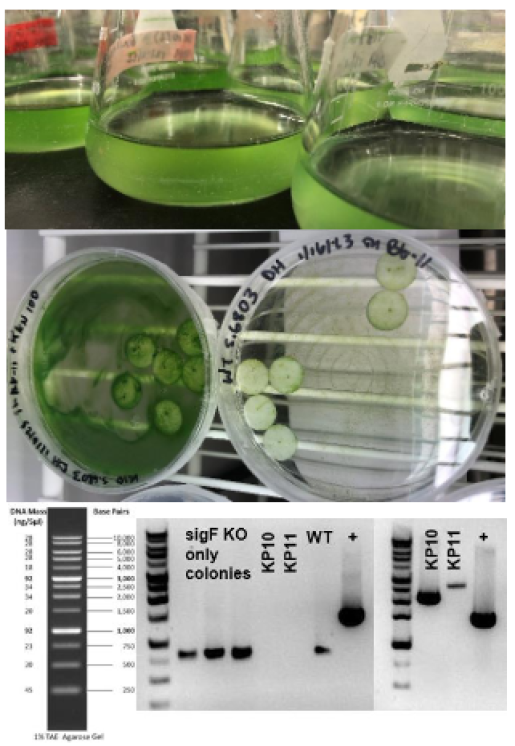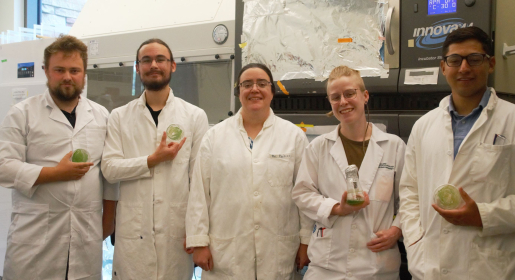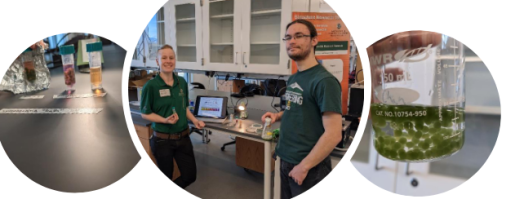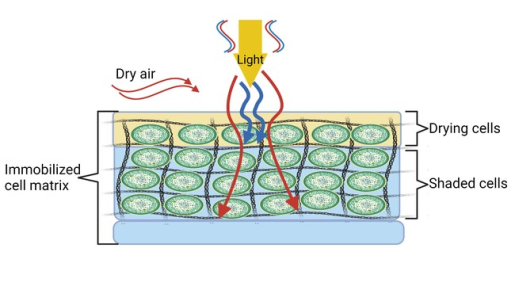The Cyantific Method - Algae could be grown in gels, but in these systems, they can dry out and be shaded by other algae. Therefore, the team plans to manipulate a cyanobacterial genome so these cells can better shield themselves from drying and harvest light in the shade within these gels.





Figure 2. S. 6803 sigF knockout + kpsM overexpression mutant confirmation and growth. Top: Mutant cultures grown for RNA and protein extraction. Middle: Biofilm formation test assay of mutant (left) and wild type (right) on glass filters. Bottom: Gel electrophoresis images showing the absence of the sigF gene (~777 bp) in KP mutants compared to the wild type on the left and KP10 showing a band of the expected size (~ 1.9 kb) for the kpsM-eYFP fusion region prior to sequencing confirmation. Positive control (+) shown is the 1.5 kb ilvC gene from E. coli colony PCR.
The Cyantific Method
December 7, 2025

Cyantific Method team, left to right: Nolan, Andrew, Dr. Peebles, Darcy, and Derek in the CSU Scott Bioengineering Algae Lab where the team cultivates their cyanobacteria.
The Cyantific Method
December 7, 2025

Cyantific Method Team members engage in algae-based educational outreach to the public at the 117th annual National Western Stock Show CSU Day event. Left: Immobilized cyanobacteria “balls” demonstration kept at different light intensities in pH sensitive colorimetric buffer, showing changes in color to purple as photosynthesis occurs. Middle: Darcy and Andrew with their cyanobacteria demonstration. Right: Immobilized cyanobacteria in alginate droplets or “balls.”
The Cyantific Method
December 7, 2025

Cyantific Method Team project breakdown.
The Cyantific Method
December 7, 2025

